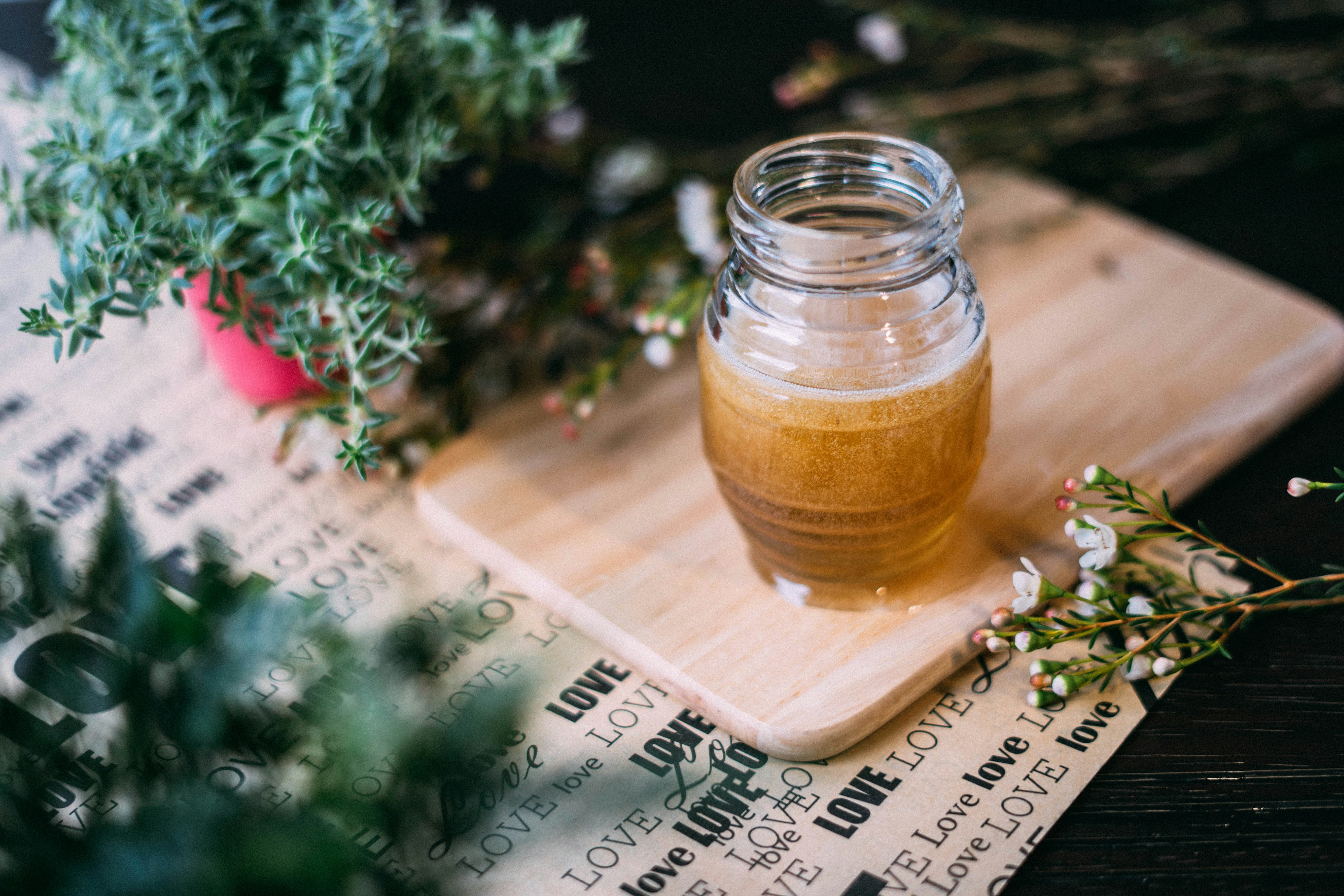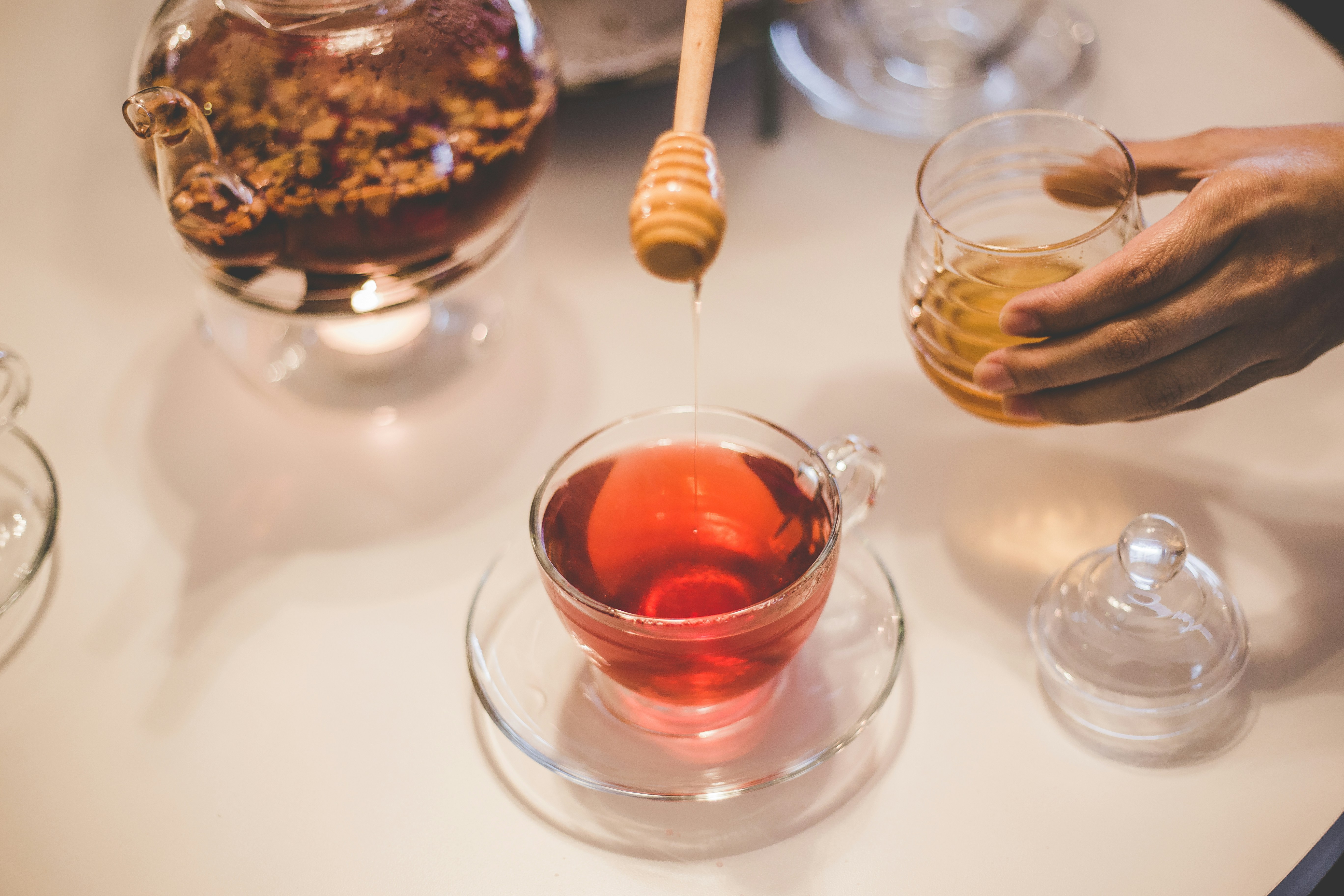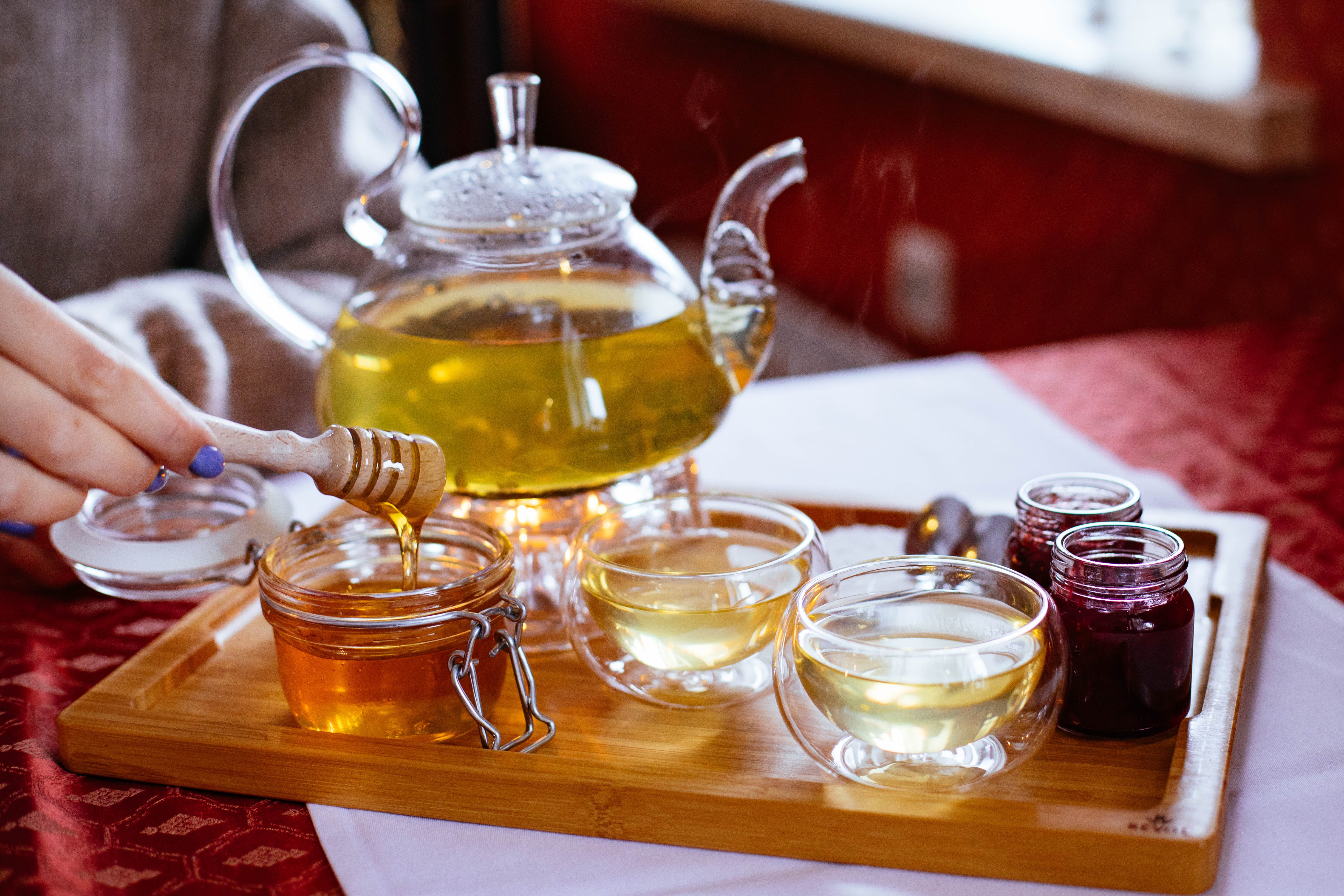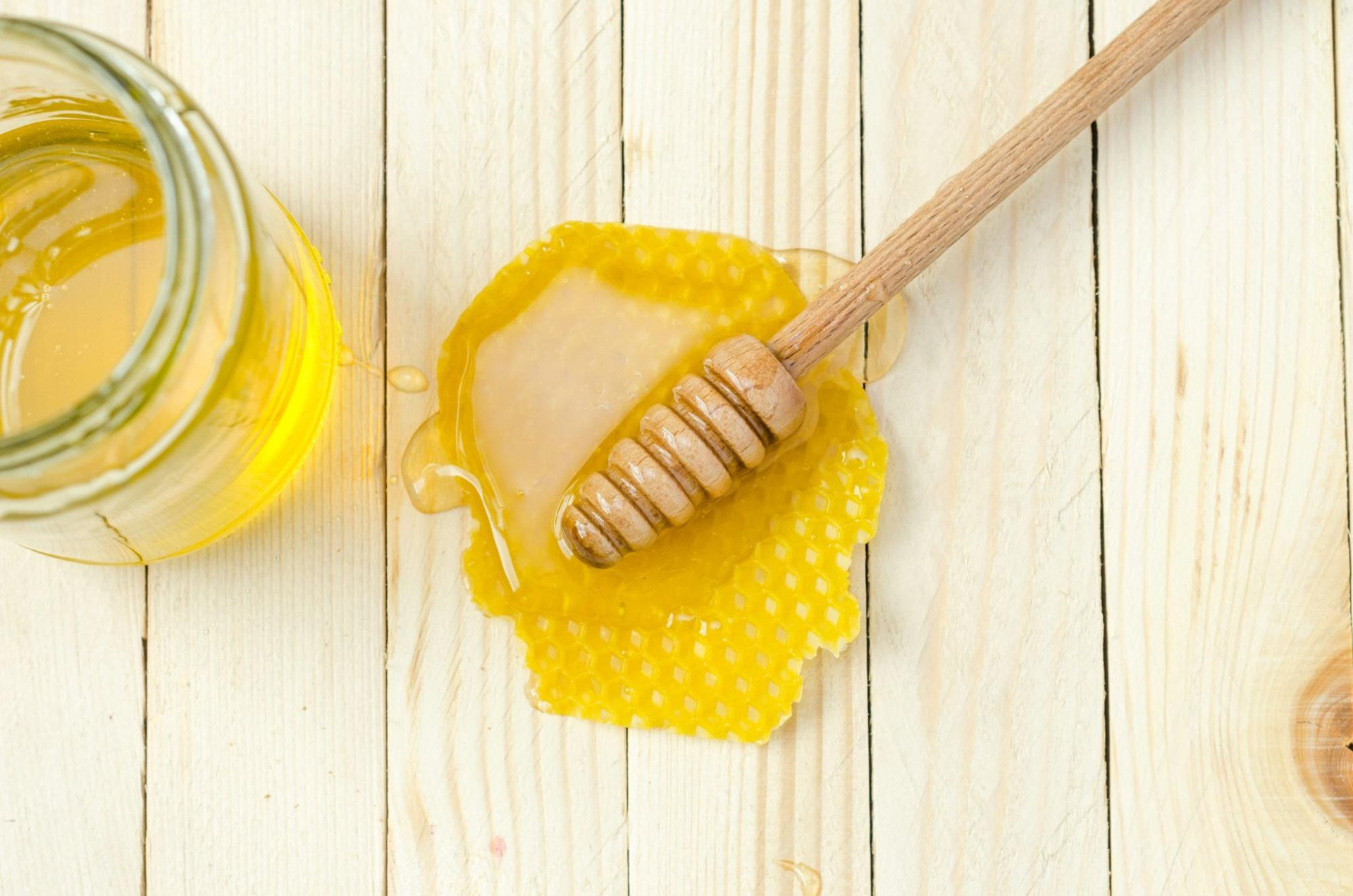The Different Varieties of Honey
When people buy honey in grocery stores, they’ll mostly find these few options: the bear-bottled honey or the organic kind, and sometimes, a uniquely flavored one. Anyone who has sampled local, raw honey knows what a shame this is.
There are many different types of honey out there, and all the best ones come from your local beekeeper. Honey bees visit different plants and flowers when foraging for nectar, and this variety of flora influences the taste of the resulting honey.
This means that the flavor, color, and overall experience can vary widely with every jar of raw, local honey you purchase. Curious to know more about the different varieties of honey? Here’s a rundown of some of the most common honey choices.
Acacia Honey
When honeybees take nectar from the blossoms of Robinia pseudoacacia (or the black locust tree), they create acacia honey. This is among the most popular honey varieties. Its classic amber color, sweet taste, and faintly floral flavor provide a traditional honey experience that sweetens your tea or oatmeal without affecting the original taste.
Acacia honey has high fructose levels and low glucose levels, meaning it will last a long time on the shelf without crystallizing. This also makes it a popular choice for diabetics, who have to steer away from the high glucose levels in many other honeys.
| Sweet Tip: Unlike other honey types, Acacia honey remains liquid for a longer period due to its high fructose and low glucose content. It's the perfect choice if you prefer your honey drip-smooth for a prolonged period. |
Buckwheat Honey
This honey boasts a dark color and a strong, spicy flavor that makes it perfect for meads and marinades. Buckwheat honey comes from the northern United States—including Ohio, New York, and Pennsylvania—as well as some eastern regions of Canada.
This North American variety is rich in iron and other essential nutrients. It also contains more antioxidants than lighter honey. Buckwheat honey is often recommended as a natural remedy for coughs and sore throats because of its antioxidant properties. Its robust flavor also makes it a good alternative sweetener in baking for those who prefer a deeper, less-sweet tang.
Clover Honey
Another classic variety, clover honey is a popular choice all around the world. It has a light, sweet, floral flavor that makes it a versatile ingredient. Whether you’re baking, mixing sauces or dressings, or simply adding honey to your tea or biscuit, the pleasant sweetness of clover honey won’t let you down.
Clover honey comes from many different regions across the world, including its original sources in Canada and New Zealand. Because of this variety, the honey can range in color from light amber to creamy white.
Eucalyptus Honey

Eucalyptus honey originally came from Australia, but you can now find it in California as well. It gets its unique flavor from—you guessed it—eucalyptus plants near the honeybees’ hive. This creates an herbal flavor with a hint of menthol.
Eucalyptus honey is extraordinary for medicinal purposes, making it a popular choice to stir into tea when you’re fighting a cold or respiratory infection. Like many different honey, eucalyptus honey’s antibacterial properties also make it a great salve for minor scrapes or burns.
Fireweed Honey
With a translucent color, sweet flavor, yet complex taste, fireweed honey is a wonderfully unique honey variety. Similar to buckwheat honey, fireweed honey is a great ingredient for savory meals. It’s popular in marinades, glazes, and other tasty grilling opportunities.
Beyond culinary uses, this honey variant is also known for its potential health benefits. The dense nutrients in buckwheat honey contribute to its antioxidant properties, which play a vital role in protecting cells from damage.
Heather Honey
Heather honey is less sweet than many of the other different varieties of honey. It has a strong, pungent flavor that borders on bitter. Its strong taste goes well with its thick, rich amber color. It may not be your first option for sweetening your cereal, but it works remarkably well in meat or seafood dishes.
Use it to create a gloriously smoky marinade and to cook up a gourmet summer barbecue. Heather honey also serves as an excellent source of protein. Its high protein ratio, compared to other honey types, presents a tasty way to add to your daily protein intake.
| Flavor Tip: Mix Heather honey with milder ones to balance its strong flavor. You'll find it adds depth to any dish without overwhelming your palate. |
Wildflower Honey
This honey variety evokes pictures of the perfect summer scene: a field of wildflowers swaying in the gentle breeze as honeybees come and go in their search for pollen and nectar. Wildflower honey comes from hives that forage in local wildflowers, creating a unique flavor, color, and intensity in each and every bottle.
Generally speaking, this honey variety is light and fruity in flavor. Wildflower honey is also a good way to fight localized seasonal allergies—a property that comes from the local wildflowers the bees used to make it.
Linden Honey
If you’re looking for something to put in your bedtime tea, look no further than a bottle of local linden honey. This variety boasts strong medicinal properties, including a sedative that eases bouts of anxiety or insomnia.
Many honey-lovers also choose it to ease symptoms of colds, bronchitis, and other respiratory infections. Linden honey has a delicate, woodsy aroma and a light yellow color to match. Aside from its health benefits, Linden honey's delicate flavor and aroma pair well with teas, cheeses, or bread. Its appealing color enhances the aesthetics of any gourmet pairing.
Orange Blossom Honey
Any manufacturer can add orange flavor to their honey, but the real stuff comes from honeybees foraging on citrus plants. Rather than a heavy, perfume-like scent, true orange blossom honey has a fresh, mild citrus scent. It also has a flavor to match, creating a unique, pleasantly fruity taste.
This honey can add a twist of citrus to your baked goods, breakfast spreads, or hot beverages. Orange blossom honey also boasts a high level of antioxidants that naturally boost your immune system and add to a healthy, balanced diet.
Sourwood Honey

Don’t let the name fool you! Sourwood honey actually has a sweet, buttery taste similar to that of caramel. As a result, it’s a popular ingredient to spread on toast, biscuits, and other fresh baked goods.
Sourwood honey got its name from the sourwood trees of the Southeastern and Midwestern United States. In addition to being the ideal choice for anyone with a sweet tooth, this honey provides many of the healing properties of other honey varieties, including anti-inflammatory properties, antioxidants, and local allergy relief.
Tupelo Honey
Tupelo honey stands out as one of the sweetest honey you’ll ever taste. This sweet honey comes from the swamps of Florida and Georgia, which means beekeepers need special equipment and care to harvest it.
This puts Tupelo honey on the more expensive side of honey varieties, but the distinct, iconic flavor is worth the cost. Along with its unique flavor comes a distinctive light amber color that occasionally bears a faint green undertone.
Manuka Honey
Originating from New Zealand, Manuka honey steps onto the global stage with a strikingly rich, earthy, and aromatic flavor. Despite its darker color, the honey produced by bees feeding on the indigenous Manuka bush is a flavorful addition to numerous dishes, adding a unique tang to the sweetness.
Methylglyoxal (MGO), a natural compound with strong antimicrobial properties, is found in high concentrations in Manuka honey. This not only makes it an excellent culinary ingredient but also an effective topical treatment for minor wounds and burns.
| Skin Care Tip: Use Manuka honey as a natural remedy for minor skin issues like mild acne. Its antimicrobial properties can soothe and nourish your skin. |
Alfalfa Honey

Crisp and mildly sweet, Alfalfa honey hails predominantly from Canada and the United States. This light-colored honey is a delightful product of bees foraging on alfalfa blossoms, mainly in regions packed with vast alfalfa fields.
Notably mellow in flavor, Alfalfa honey brings a subtle sweetness to your tea, pancakes, or baking adventures without overwhelming the original taste. It's the ideal choice for those who prefer a less robust flavor profile in their honey.
Avocado Honey
Despite what its name might suggest, Avocado honey doesn't taste like the popular fruit. Bees gather this unique variety from avocado blossoms, creating a honey that’s well-loved in Central and South America.
Avocado honey bursts with a rich, buttery flavor that distinguishes it from more traditional varietals. Its dark color is indicative of its robust character, delivering a molasses-like sweetness that pairs exceptionally well with hearty breads, strong cheeses, or as an exciting substitute for molasses or brown sugar in recipes.
Leatherwood Honey
Traveling to Tasmania's dense, untouched wilderness, we encounter the source of Leatherwood honey, a unique variety that captures the essence of this Australian region. This honey is produced by bees who feast on the nectar of the native Leatherwood tree, resulting in a honey with a distinctive character.
Leatherwood honey stands out with an intense, full-bodied taste and a slightly spicy flavor, infused with floral notes reminiscent of the wilderness from which it is harvested. Its natural perfume and slightly darker hue add to the exotic charm of this honey.
The Global Honey Palette
There are some intriguing and flavorsome varieties of honey produced around the globe that are gaining popularity among honey enthusiasts. Let's compare these unique varieties in the table below.
| Blueberry Honey (USA) | Chestnut Honey (Italy) | Jarrah Honey (Australia) | |
| Color | Light Amber | Dark Amber | Dark, Golden |
| Taste | Slightly tangy | Nutty, slightly bitter | Rich, caramel-like |
| Health Benefits | Antioxidant properties | Digestion | High antibacterial activity |
| Best Paired With | Breakfast items | Strong cheeses, meats | Desserts, baking |
| Rareness | Common | Somewhat Rare | Rare |
Enjoy the art of pairing these unique honey with different food and drinks to complement and amplify their distinctive flavors and benefits.
Embracing the Honey Adventure
Are you excited to see what kind of honey your honeybees produce? You can buy bees, equipment, and all the resources you need for a successful honey harvest at Mann Lake. Do you have a favorite honey variety that’s not on this list? Share it with us in the comments below!

